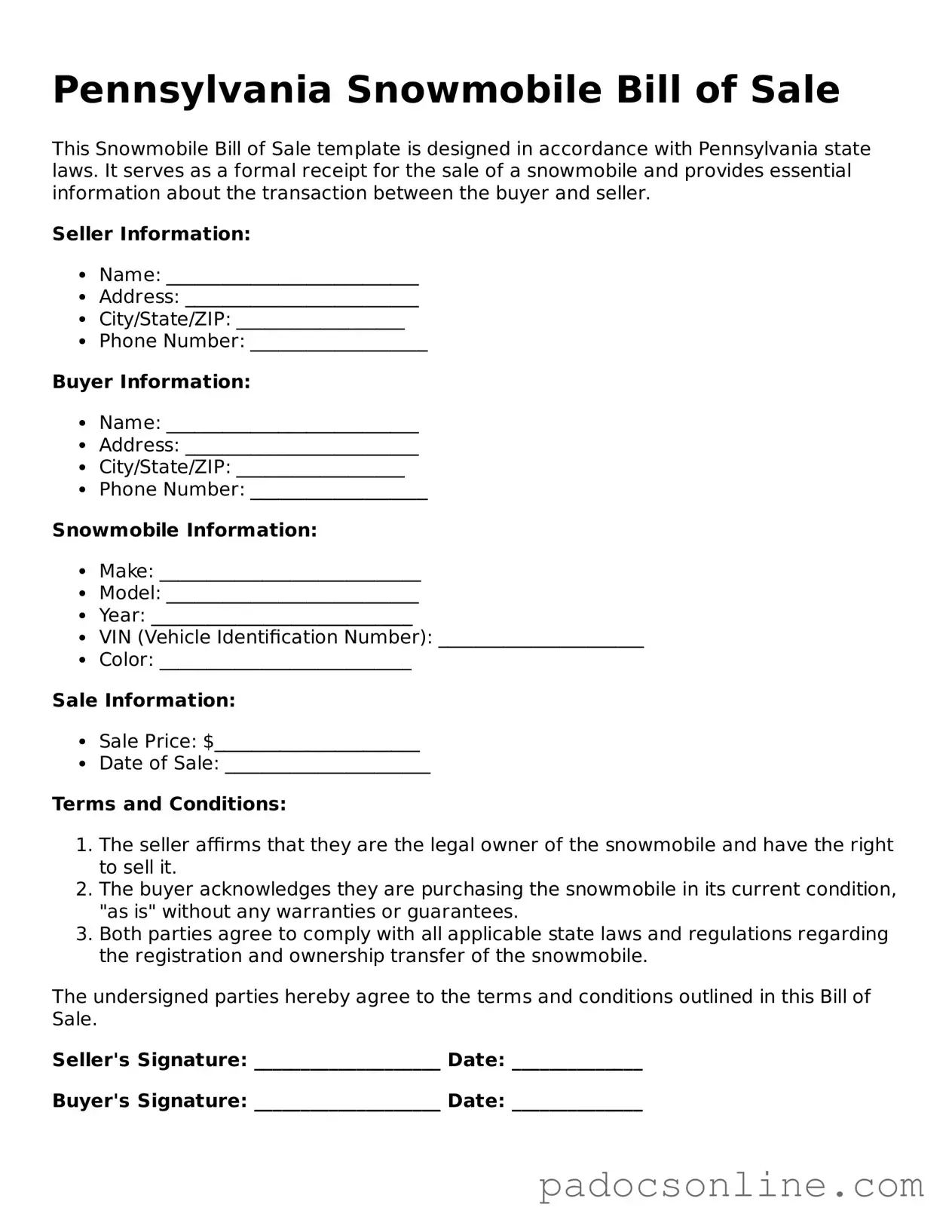Filling out the Pennsylvania Snowmobile Bill of Sale form may seem straightforward, but many individuals make common mistakes that can lead to complications down the line. One frequent error is neglecting to include the seller's signature. Without this crucial piece of information, the document lacks validity, and the transaction may be questioned later. Always ensure that the seller signs the form before finalizing the sale.
Another common pitfall involves incorrect or incomplete vehicle identification. The form requires specific details about the snowmobile, such as the make, model, and Vehicle Identification Number (VIN). Failing to provide accurate information can create issues when registering the vehicle or transferring ownership. Double-checking these details is essential to avoid future headaches.
People often overlook the importance of including the purchase price. This figure is not merely a formality; it serves as a record of the transaction and can affect taxes. If the purchase price is missing or inaccurately stated, it may lead to complications with the Pennsylvania Department of Transportation or local tax authorities.
Additionally, many individuals forget to provide the date of sale. This date is vital for establishing the timeline of ownership and can impact warranty claims or liability issues. Always take a moment to ensure that the date is clearly indicated on the form.
Another mistake is failing to include the buyer's information. While it may seem obvious, some people assume that this information is unnecessary. However, the buyer's name and address are critical for the transfer of ownership. Omitting this information can result in the buyer facing challenges when trying to register the snowmobile.
Lastly, individuals often do not keep a copy of the completed Bill of Sale. This document serves as proof of the transaction and can be important for both the buyer and seller in case of disputes. Retaining a copy ensures that both parties have access to the same information should questions arise in the future.
